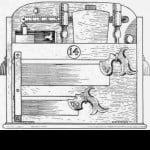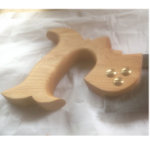how myths are started
Tagged: myths
- This topic has 5 replies, 5 voices, and was last updated 11 years ago by
 Steve Follis.
Steve Follis.
-
AuthorPosts
-
I usually read the unplugged shop links that interest me on a daily basis. I came across “The Relative Advantages of Long and Short Screw Drivers” re published from an article in 1880 http://blog.lostartpress.com/2013/05/31/the-relative-advantages-of-long-and-short-screw-drivers/
I don’t want any of my fellow woodworkers to be fooled. I have studied physics extensively and would like to share.
A longer shaft on a screwdriver does not result in more torque on a screw, it is the diameter of the handle that will increase the torque. (although longer shafted screwdrivers typically have larger handles)
The article suggests that less force could be used on a longer shafted screw driver leaning to the side than a shorter screw driver leaned at the same angle.
Even if you lean the screw driver the radius of rotation is still about the radius of the screw driver (no benefit) unless your goal is to destroy the screw head. Mathematically the torque vector is perpendicular to the radius vector and the force vector.
The only advantage in terms of torque that the long shaft would give would be in opening a paint can.
By this logic the article appears to be completely inaccurate.
If the screw driver is leaned and simply pushed or pulled around in a circle the torque would be greater for the longer screw driver since the radius would increase in the torque equation T=rxF. But this is not clear on first inspection of the article that the screw driver is being used more like a wrench and not being twisted about its axis.
Viewing the comments people are agreeing with the article that it is simple physics and others disagreeing completely but it is hard to tell if either is interpreting the article correctly and thus a myth was born.
On another note lets keep it simple and just drive our screws straight in, with a pilot hole you don’t need a lot of torque.
I was trying to determine if that 1880’s article was trying to suggest that we grind our driver blades out of square to encourage the eccentric turning of the screw. Figure 5 seems to bear that out.
It seems to me, that if one wants to “manhandle” a difficult screw, then the article provides a tip on how to gain extra “wrenching” torque. Otherwise it seems to me a perfect example of “Primitive Pete”.



-
AuthorPosts
- You must be logged in to reply to this topic.
